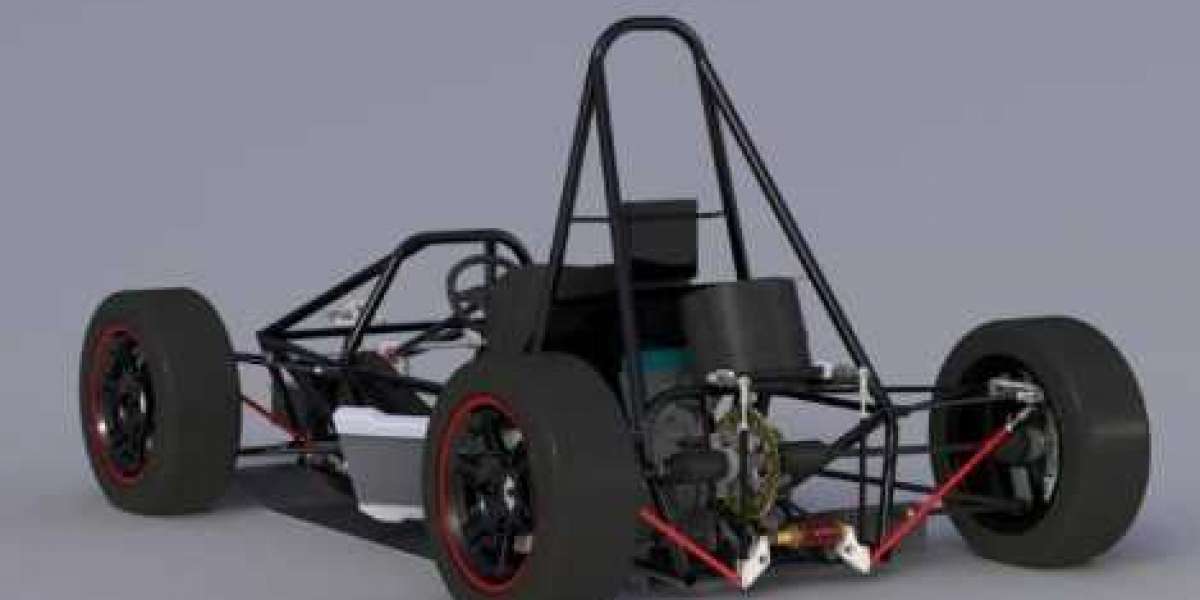When it comes to competitive karting, performance isn't just about engine power or driver skill; it's about every component working in harmony, especially the kart wheel. Often underestimated, kart wheels are a key factor in ensuring grip, handling, and overall consistency on the track. Whether you’re racing on asphalt or dirt, a high-quality wheel can significantly impact lap times, tire wear, and driver control. In this article, we’ll explore what separates average wheels from high-performance options and why this component deserves serious attention from racers and mechanics alike.
1. Material Matters: Aluminium vs. Magnesium
The first thing that defines a high-performance kart wheel is the material. Two primary options dominate the market: aluminium and magnesium. Aluminium wheels are more affordable and durable for beginners and practice sessions. They're heavier, which can lead to increased heat retention and slower cooling. Magnesium wheels, on the other hand, are lighter and allow for faster heat dissipation. This keeps tire temperatures in the optimal range for longer, helping maintain grip and extending tire life. Magnesium wheels also reduce rotational mass, improving acceleration and corner exit speeds, making them the top choice for competitive drivers.
2. Wheel Size and Its Impact
In karting, the two most common wheel diameters are 5” and 6”. However, within those categories, subtle size differences in width and offset can affect how the kart behaves on the track. Front wheels typically range from 130mm to 140mm in width. Rear wheels are wider, often between 180mm and 210mm. Wider wheels offer more tire contact with the track, increasing grip but also resistance. Narrower wheels reduce grip but improve straight-line speed and responsiveness. Matching the right width and offset to the type of track and driving style is key.
3. Cooling Properties and Ventilation
Heat is the enemy of tire performance. Overheating can lead to premature wear, blistering, and unpredictable grip. That’s why vented kart wheels or those designed with special heat-dissipation channels are critical in competitive environments. Look for wheels that are engineered with internal ribbing or vent holes to allow for better airflow. Magnesium naturally dissipates heat faster than aluminium, which is another reason it's favoured in high-performance setups.
4. Rigidity and Flex
This might surprise newer racers, but the flex characteristics of a wheel affect how the tire interacts with the track. Stiffer wheels offer sharper responses, which is excellent for high-grip conditions and dry tracks. More flexible wheels can be beneficial in wet or low-grip situations, where a softer edge on handling improves control. Top manufacturers engineer wheels with specific rigidity to match tire compounds, track temperatures, and kart chassis setups.
5. Hub Compatibility and Fitment
No matter how high-tech your kart wheel is, if it doesn’t fit your hubs properly, performance and safety will suffer. Check for bolt pattern compatibility, hub bore diameter, and proper mounting surface (to avoid slippage). Many teams opt for wheels with universal compatibility, but always double-check fitment for your specific chassis brand.
6. Maintenance and Surface Finish
A high-performance wheel isn't just built for speed; it’s also built for longevity and easy maintenance. Anodised finishes resist corrosion and scratches. Bead-locking lips help tires stay seated, especially in high-speed corners. Easy-clean surfaces are especially helpful in dirt or wet conditions. Always inspect wheels for cracks or deformation after races. High-performance materials are tough but not invincible.
7. Sourcing the Right Kart Racing Parts
As you upgrade your setup, it’s essential to get your wheels and other components from reliable sources of kart racing parts. These suppliers specialise in high-quality, track-tested components like hubs, sprockets, bearings, and wheels. Investing in precision-engineered parts ensures that everything fits and functions correctly, maximising the performance benefits of your wheel choice.
Conclusion
A high-performance kart wheel is more than just a circle of metal; it’s a finely tuned component that affects grip, handling, heat management, and responsiveness. Choosing the right wheel material, size, rigidity, and finish can give you a distinct edge on race day. Whether you're a weekend enthusiast or an aspiring pro, upgrading your wheels and pairing them with premium kart racing parts is one of the smartest moves you can make to enhance your kart’s overall performance. Make the right choice, maintain them well, and you'll feel the difference in every corner, every lap, and every finish line.








